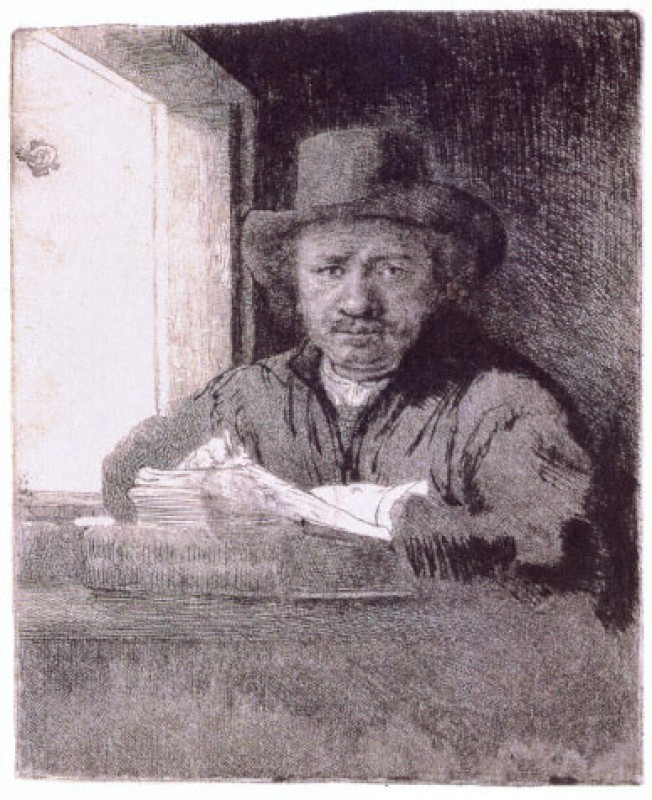Rembrandt and the Face of Jesus

Rembrandt Drawing at a Window, 1648, Etching, drypoint, and burin ©The Pierpont Morgan Library, New York, purchased by Pierpont Morgan, 1905
Rembrandt and the Face of Jesus
In mid-career, Rembrandt shifted to a new model of Jesus based on a living, accurate-looking model, possibly the first time in the history of Christian Art this had been done. Lloyd DeWitt will outline the recent exhibition he organized at the Philadelphia Museum of Art, which travelled to the Musée du Louvre and the Detroit Institute of Arts. Rembrandt’s break from tradition, which was based on miraculous images of great authority, likely began as a quest for an emotional, realistic face of Jesus for finished works of art such as the 1648 Supper at Emmaus (Louvre) in which it first appears. The series of small oil sketches that document the shift seems to have continued growing and taking on new significance for the artist, at a tumultuous period in his own life, but a time when he was dealing with those at the heart of an extraordinary interfaith dialogue in his city of Amsterdam.
Lloyd DeWitt is Curator of European Art at the Art Gallery of Ontario, and organizer of the exhibition Rembrandt and the Face of Jesus.




